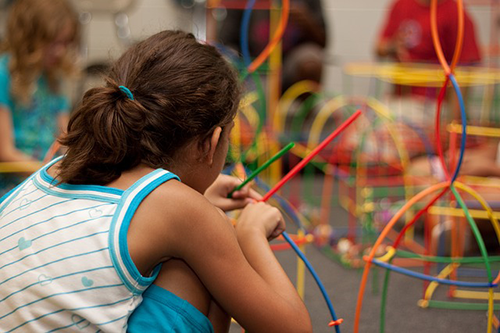Dec 04 2015 Improving child welfare services requires cross-agency, cross-sector collaboration
 Children in the child welfare system and their families face a unique set of challenges in navigating diverse and overlapping systems of care in both the public and non-profit sectors. While Child Protective Services (CPS) is the central agency involved in child welfare, other government agencies and private organizations play key roles. According to a manual from the Office on Child Abuse and Neglect, Children’s Bureau, the following groups are often involved: law enforcement, educators, child care providers, health care providers, mental health care provides, legal and judicial system professionals, substitute care providers, mental health care providers, support service providers, domestic violence victim advocates, substance abuse treatment providers, and concerned community members. These children and their families can face roadblocks and difficulties if there is not sufficient communication and cooperation between these agencies and organizations. A new initiative is increasing cross-agency and cross-sector collaboration to improve child welfare services in Sacramento County.
Children in the child welfare system and their families face a unique set of challenges in navigating diverse and overlapping systems of care in both the public and non-profit sectors. While Child Protective Services (CPS) is the central agency involved in child welfare, other government agencies and private organizations play key roles. According to a manual from the Office on Child Abuse and Neglect, Children’s Bureau, the following groups are often involved: law enforcement, educators, child care providers, health care providers, mental health care provides, legal and judicial system professionals, substitute care providers, mental health care providers, support service providers, domestic violence victim advocates, substance abuse treatment providers, and concerned community members. These children and their families can face roadblocks and difficulties if there is not sufficient communication and cooperation between these agencies and organizations. A new initiative is increasing cross-agency and cross-sector collaboration to improve child welfare services in Sacramento County.
“Collaborative approaches to best serve children and families prove to be the most effective in achieving the outcomes we all want; safety, permanency and well-being,” explained Phil Serna, Chairman of the Sacramento County Board of Supervisors. This particular collaboration, dubbed Children and Families Together, will involve three divisions of the Department and Health and Human Services (Child Protective Services, Behavioral Health Services, and Public Health), the Department of Probation, the Department of Human Assistance, the Office of Education, the Juvenile Dependency and Delinquency Courts, Law Enforcement, and the District Attorney’s Office. Several of the agencies will also be working with non-profits, including Lilliput Children’s Services and Sierra Forever Families to assist with permanency-related services, and River Oak Center for Children and Stanford Youth Solutions for “community-based wraparound services to youth and their families at home.”
“All relevant professionals must be aware of their role in child protection and the unique knowledge and skills they bring to their community’s prevention and intervention efforts.”
According to a press release, the cross-sector initiative aims to tackle a variety of issues in child welfare, including reducing foster care entries, reducing out-of-home placements, ensuring safe reunification of families, securing permanency for children, decreasing recidivism, serving Commercially Sexually Exploited Children (CSEC), and more.
For complex issues such as child welfare, that involve so many stakeholders and encompass a variety of issues, collaboration can be key. “All relevant professionals must be aware of their role in child protection and the unique knowledge and skills they bring to their community’s prevention and intervention efforts,” the Office on Child Abuse and Neglect manual explains. “They must also understand the roles, responsibilities, and expertise of other professionals.” In other words, they must Communicate the Interdependency of Each Sector to develop an understand among partners of each sector’s (or in this case, agency’s) unique contributions and recognize their differing expertise, resources, and networks. Conveying the benefit of working with cross-agency or cross-sector partners fosters continued participation in the collaboration and commitment to results.
For a successful example of an intersector collaboration in child welfare, see our case study Improving Educational Outcomes for Foster Children in Marion County. In this collaboration, the focus was on education, as children and youth in foster care face a unique set of educational challenges, including frequent school transfers, a lack of communication between public schools and child welfare agencies, and a lack of stable academic support and guidance. The resulting FosterEd program, involving the National Center for Youth Law and the Indiana DCS and Department of Education, helps identify educational barriers that foster children face and provides a support system for them to work past these barriers. FosterEd partners used a data-driven approach by committing to information sharing and using an educational case management system that served as a mechanism for stakeholders to securely share and track the educational strengths and needs of individual foster children.
Sharing data could prove to be useful for the many agencies tackling many issues in the Children and Families Together initiative. “As with most things in life, rarely do we arrive at our destination by traveling a single road,” said Chief Probation Officer Lee Seale. “Children who are in need of welfare services often have experienced a chaotic and bumpy road along the way and need support from a multitude of sources.”
